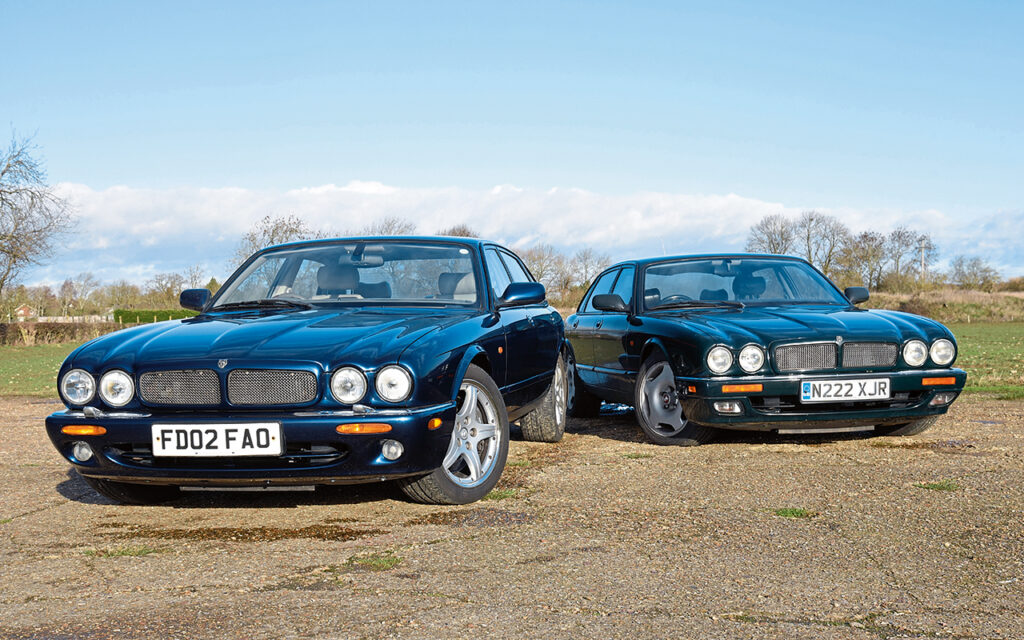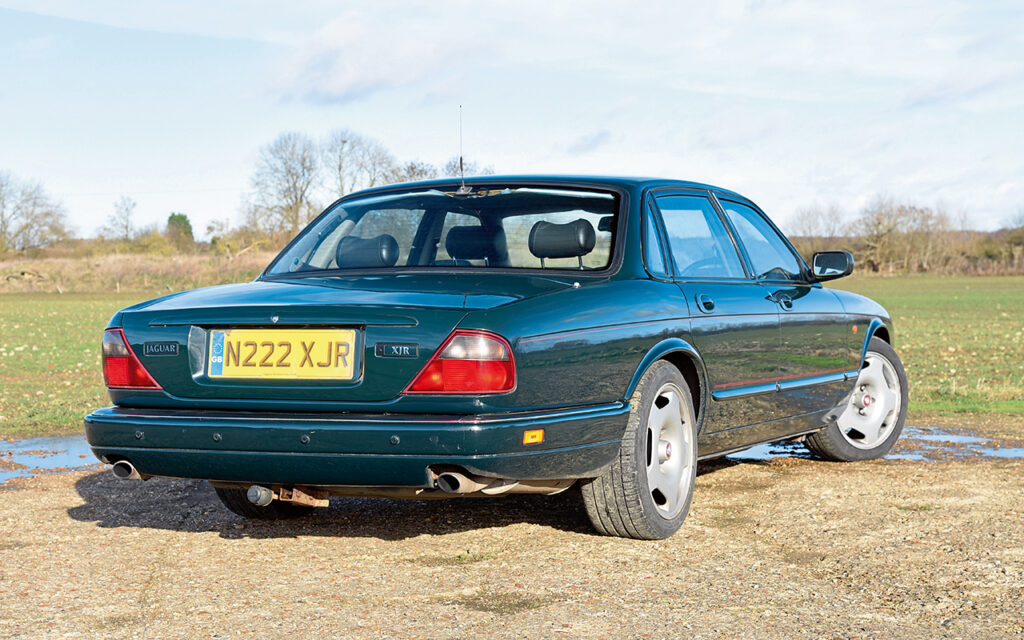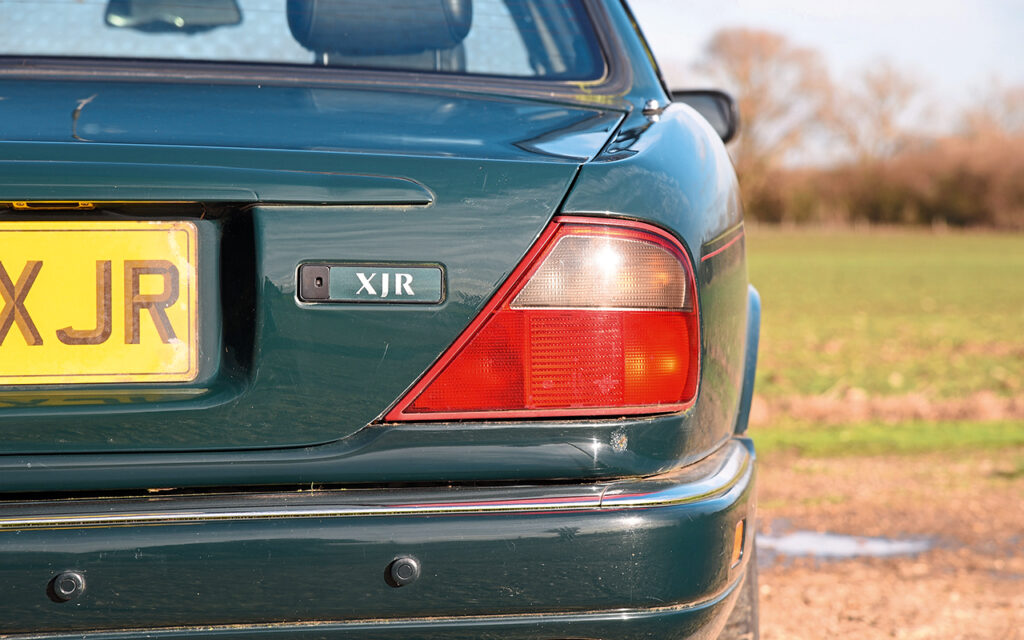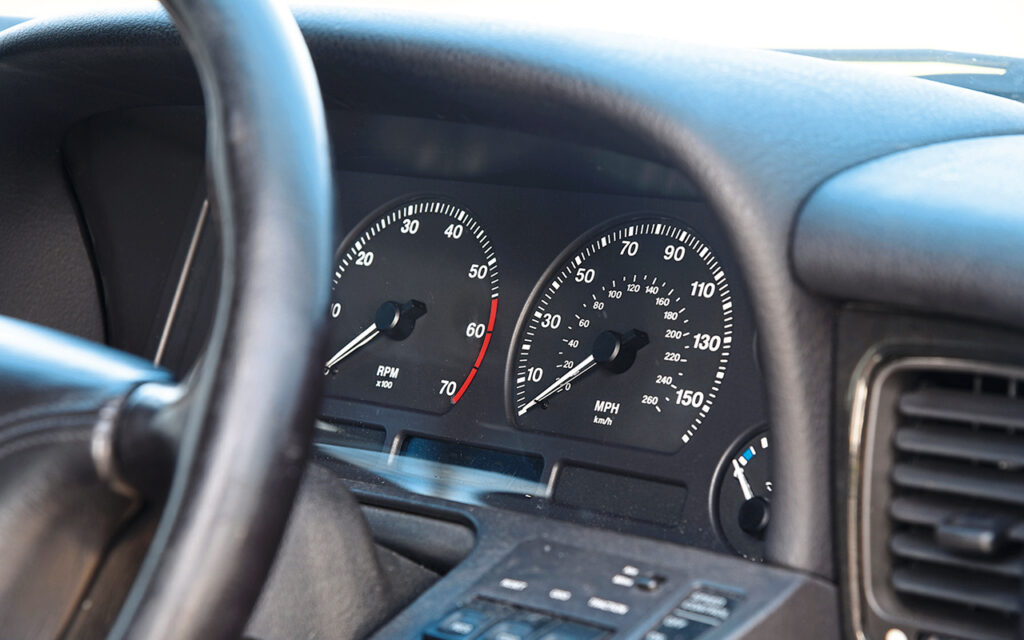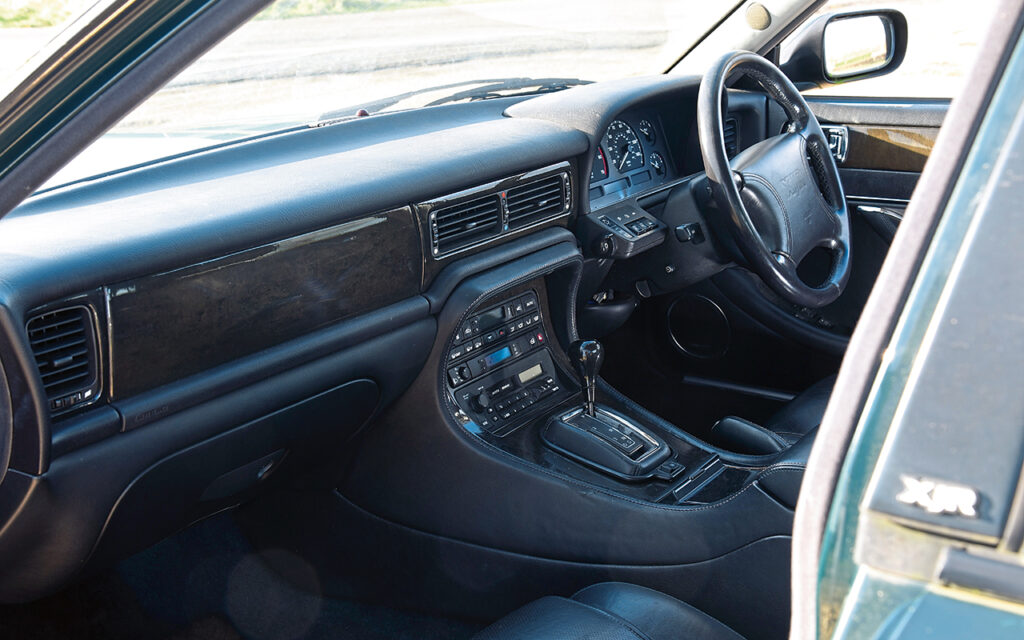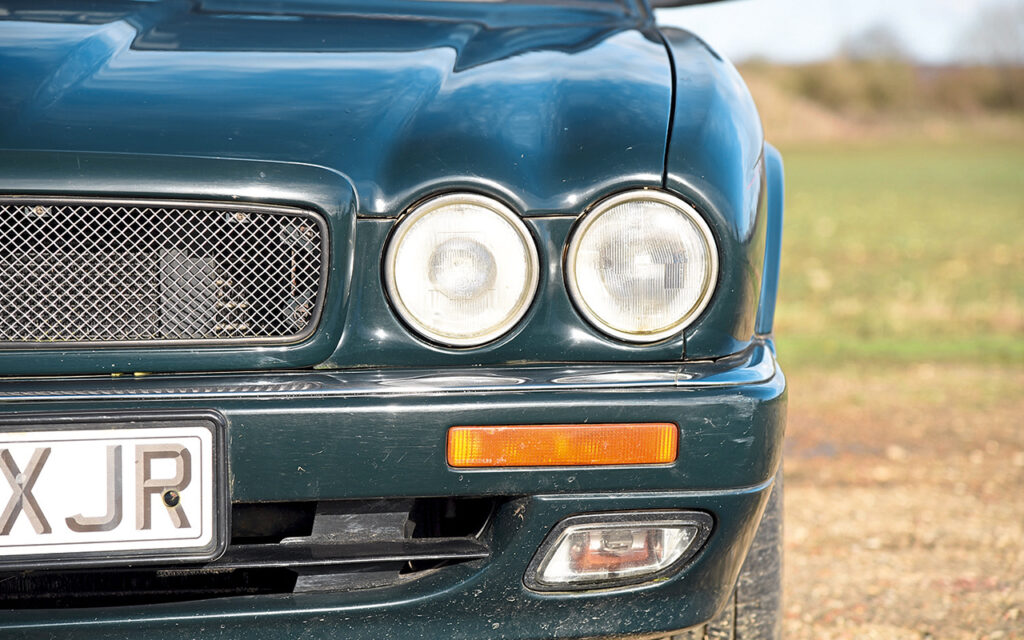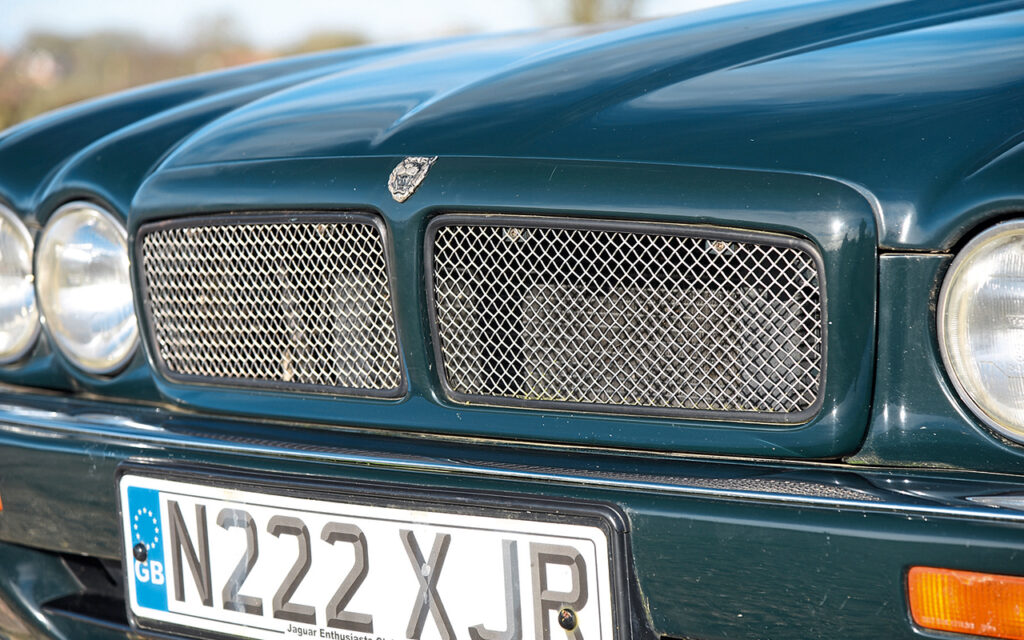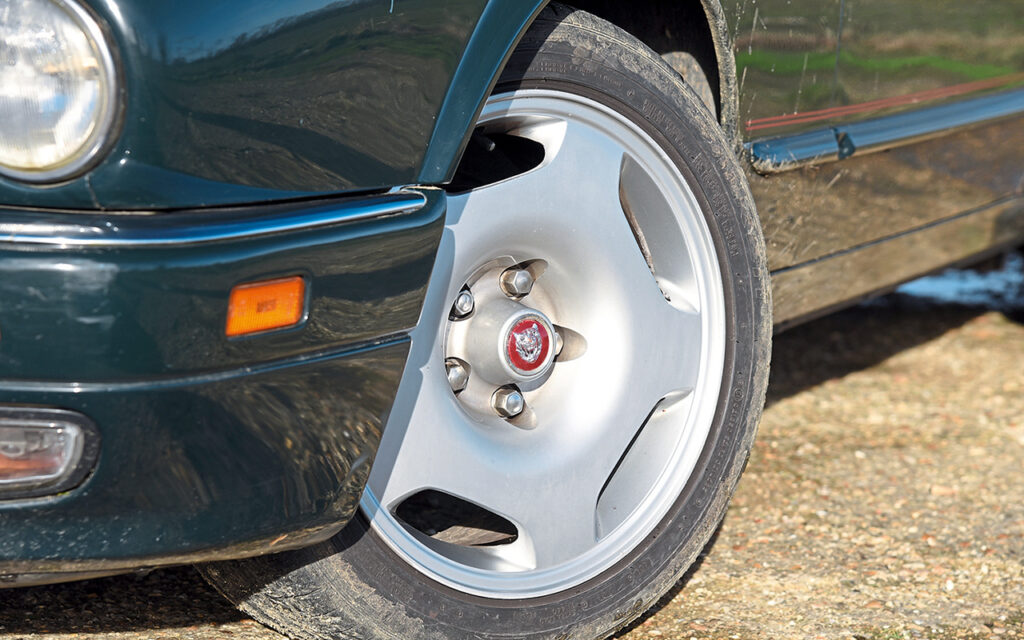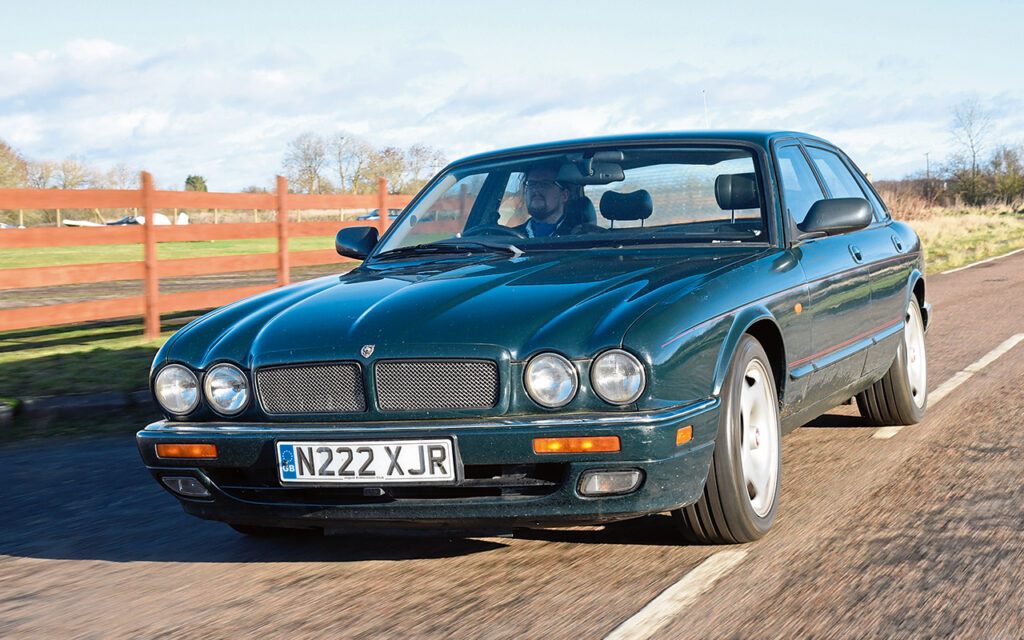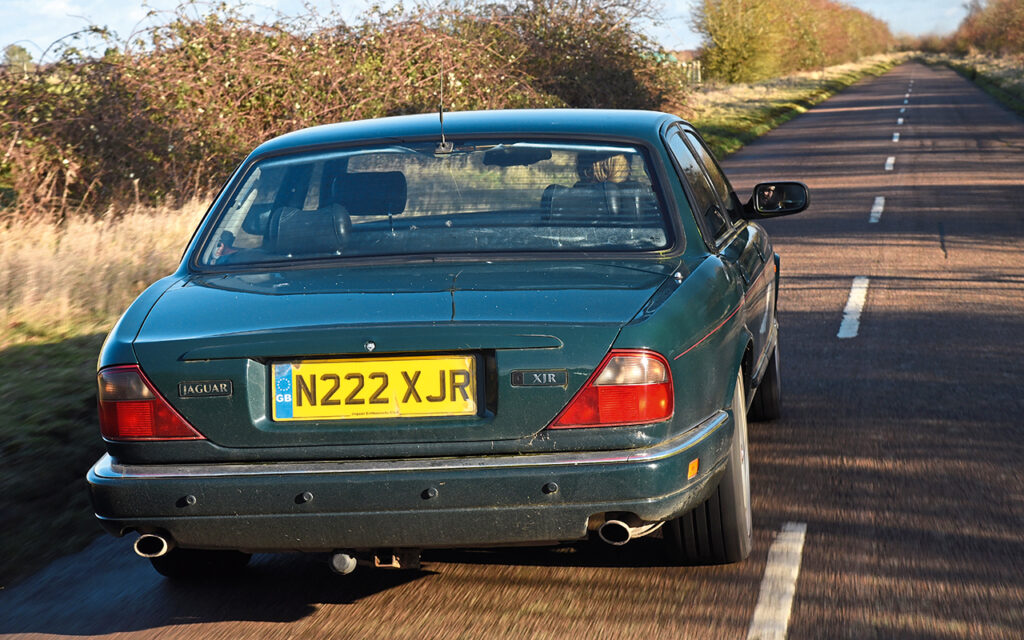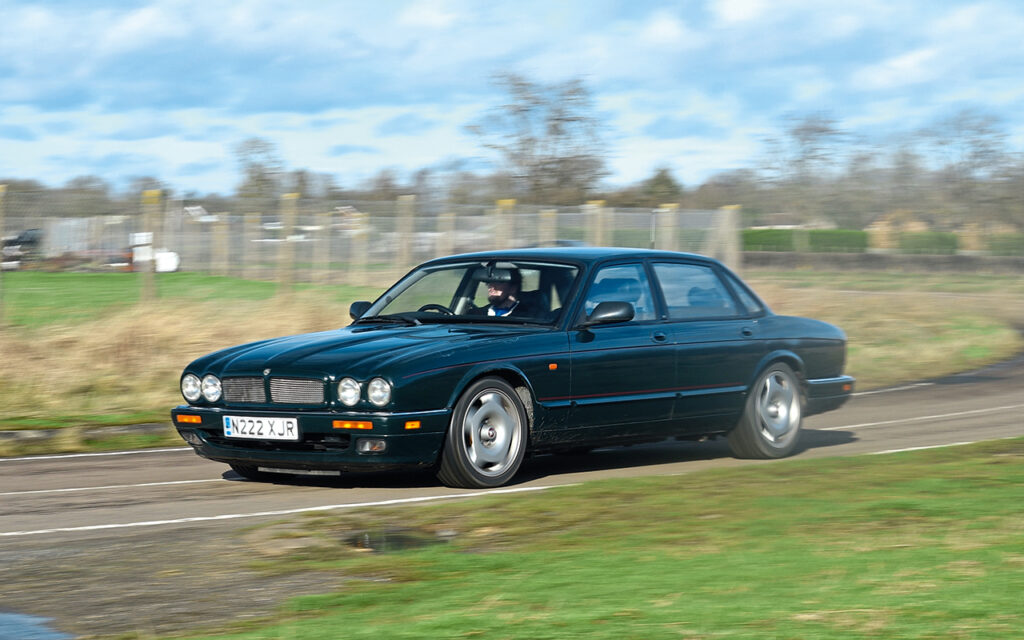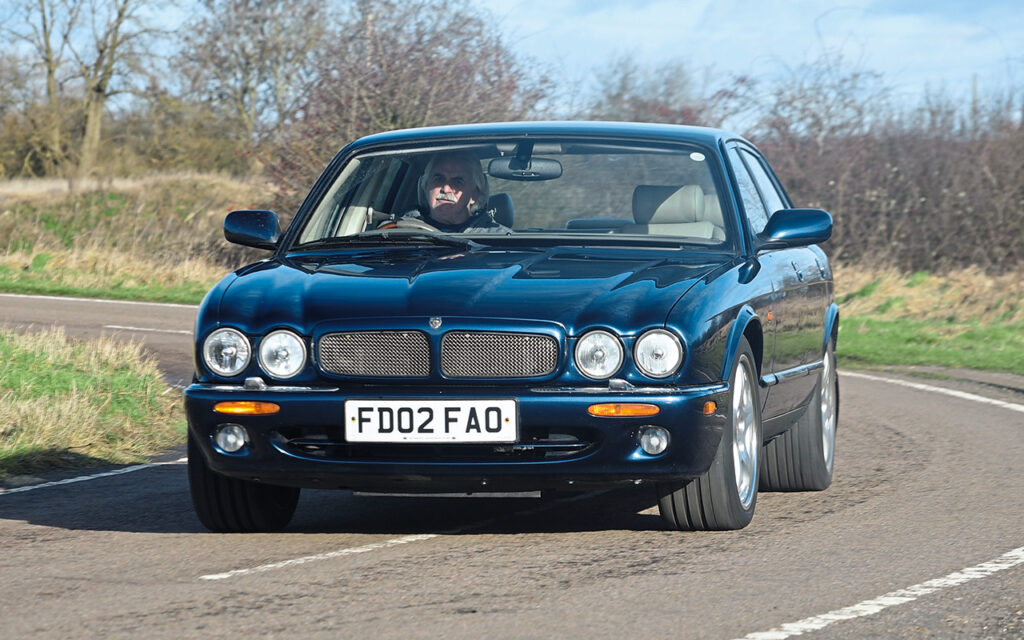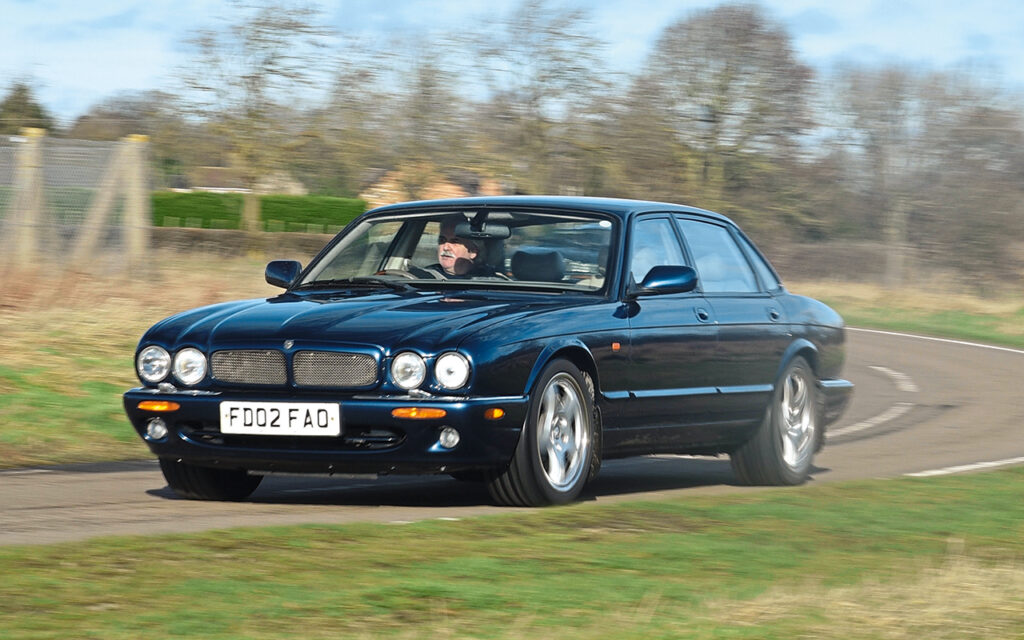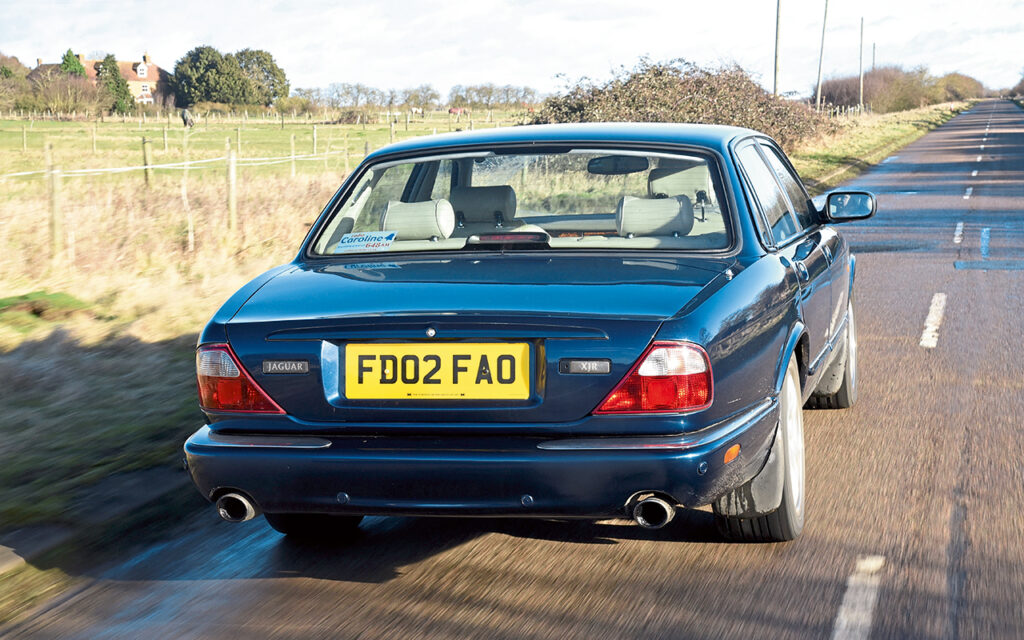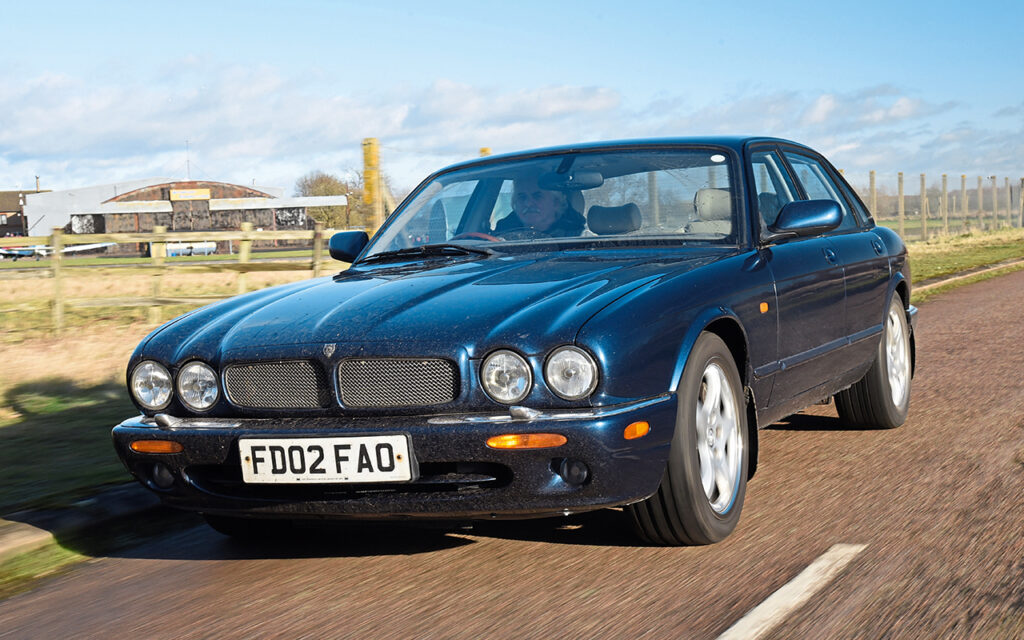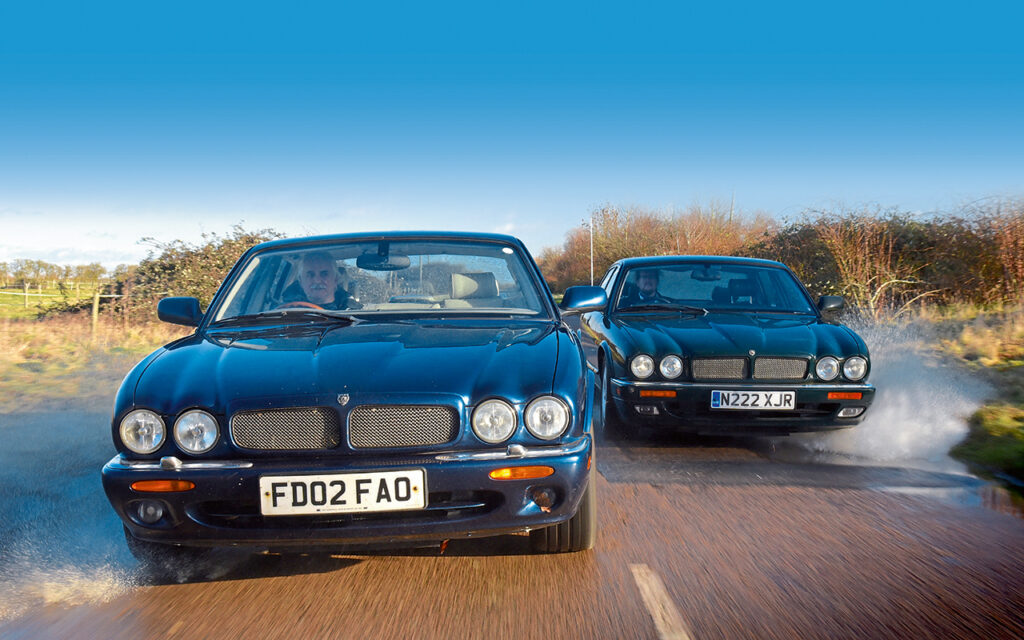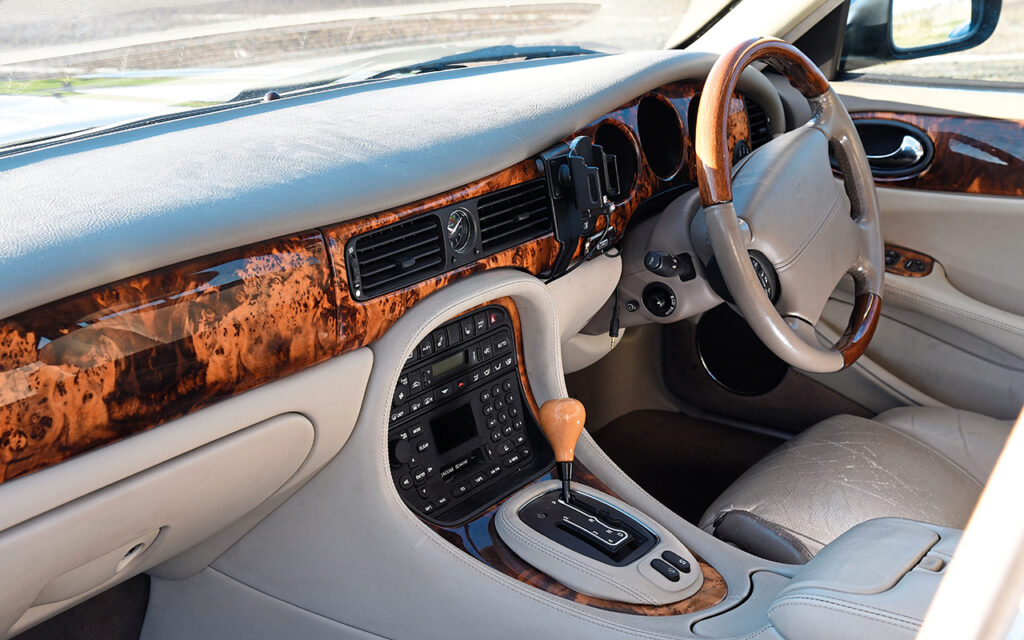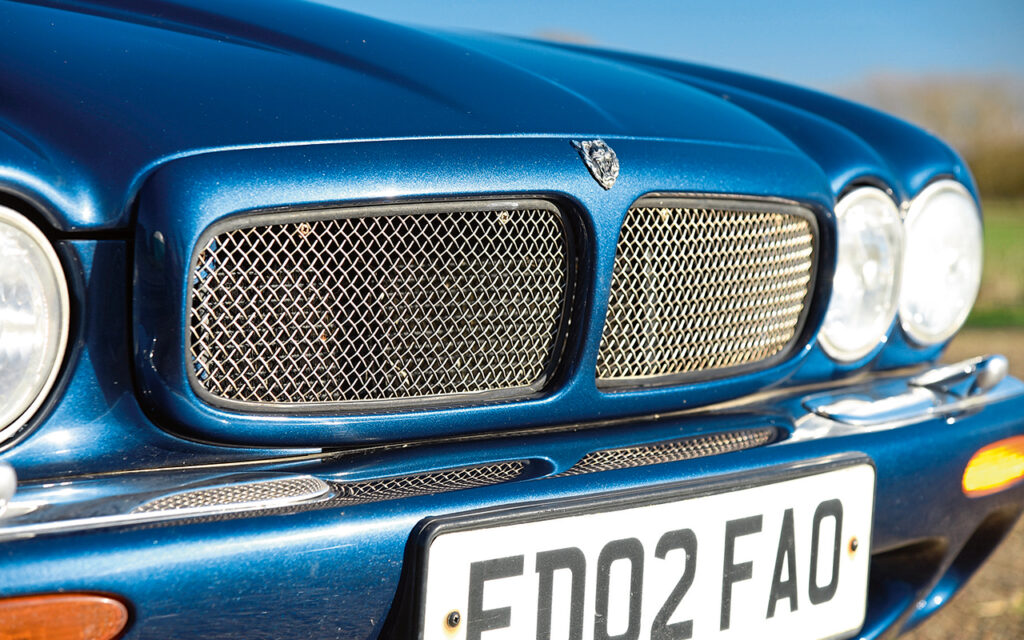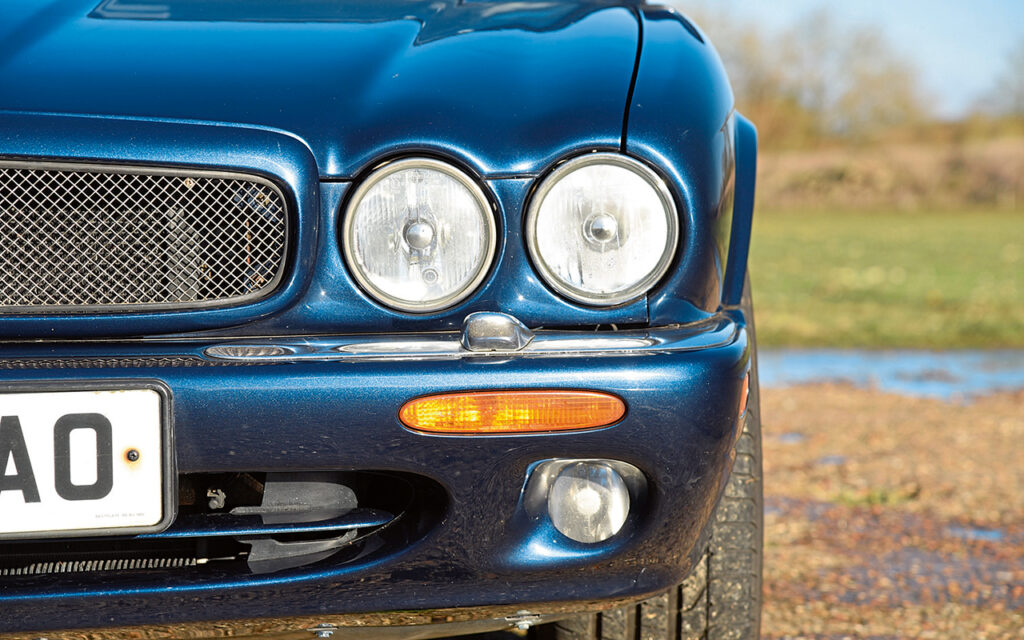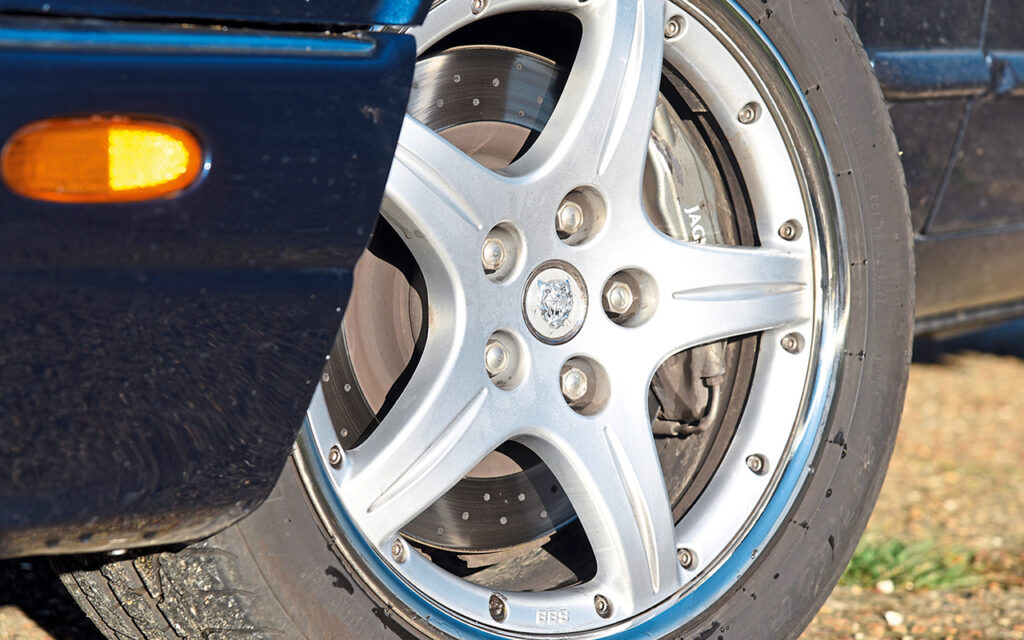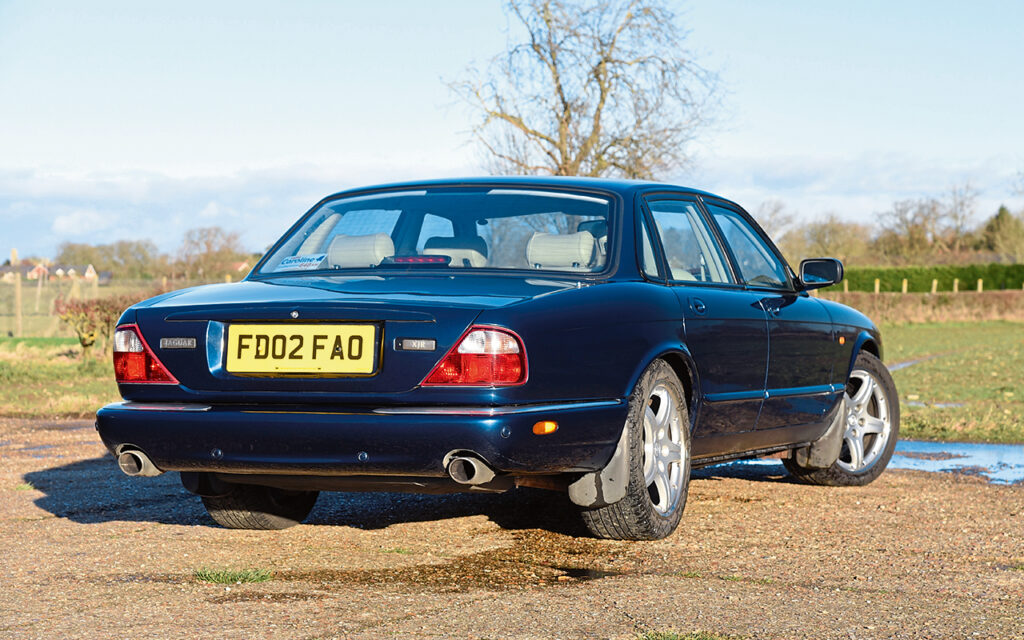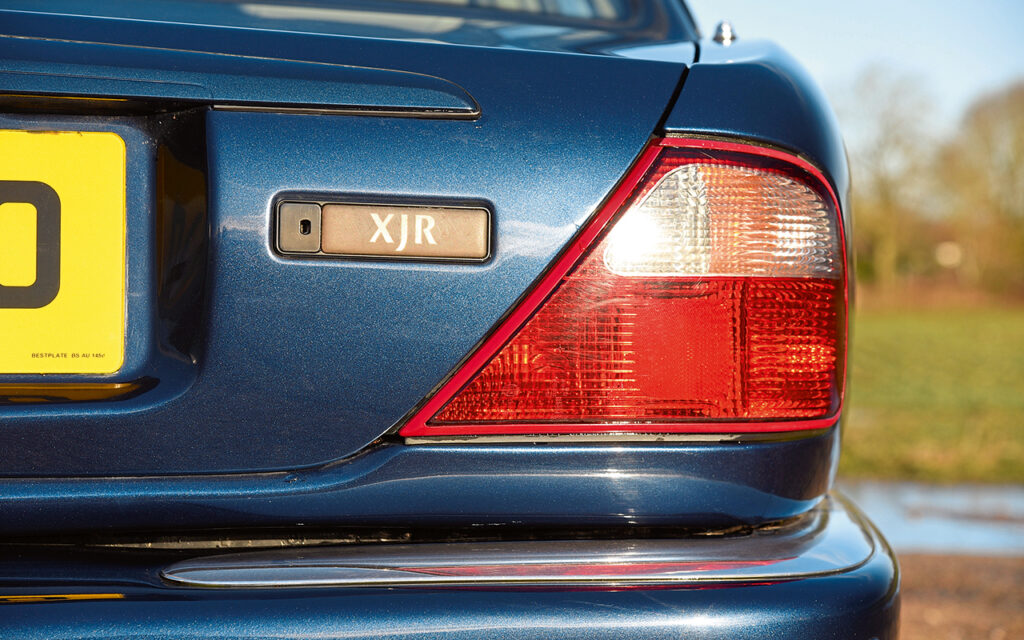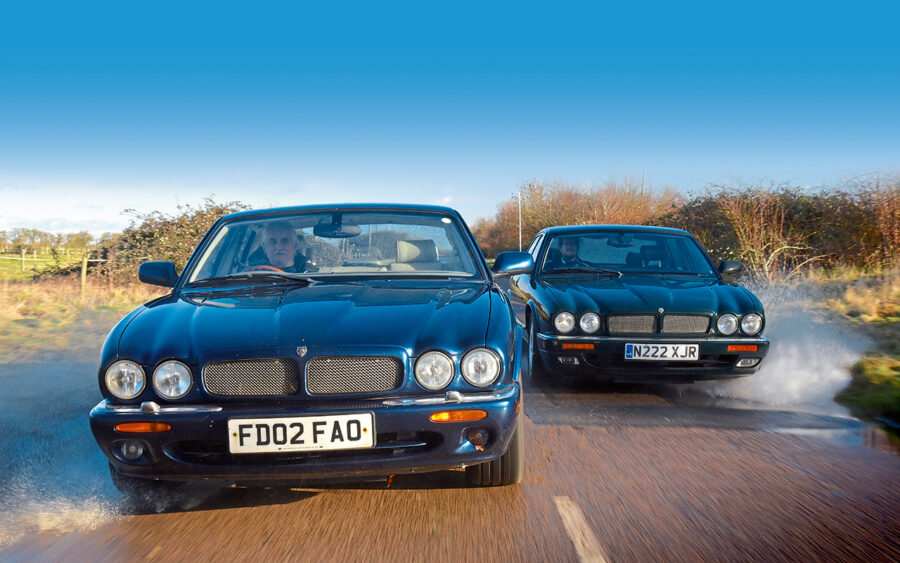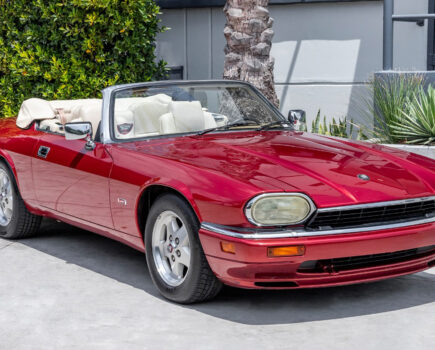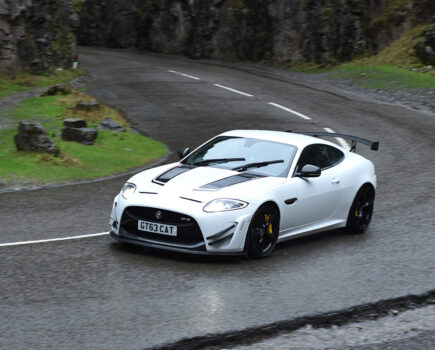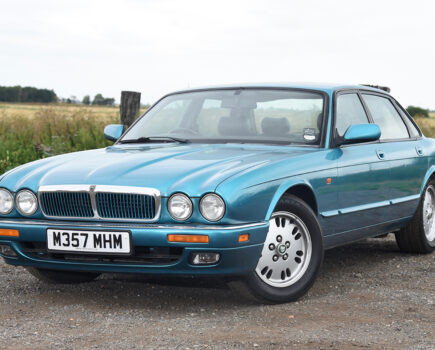X300 or X308? It’s a tough decision when you’re pondering the range-topping XJR. We’ve brought these supercharged heroes together to find out
Words: Craig Cheetham
An extra 30bhp and an additional pair of cylinders might sound like just the ticket, but are they really enough to make you want a V8 XJR over a six-cylinder? After all, the second and third generations of Jaguar’s supersaloon were as similar as they were different, and it was the 1994 six-pot model that was famously described as “probably the best saloon car in the world” and “the goal of every luxury car maker” by the UK motoring media at its launch.
Jaguar couldn’t have hoped for a better response. The XJR was the flagship of the new X300 range at the time, and it was a model that the automotive press was quick to zero in on. After all, the X300 was a car with a huge amount of weight on its shoulders. It was the first new Jaguar saloon in almost a decade, and the very first model to emerge under Ford’s stewardship of the brand. It needed to make a massive impact and significantly increase Jaguar’s sales volumes – and it did.
Back in 1994, there were just two models in the Jaguar range – the XJ and the long-in-the-tooth XJS. Things were much simpler back then, admittedly, but Jaguar was an anachronism. And it was struggling.
The all-new supercharged XJR, with its 20mpg fuel economy, four-speed transmission, steel body and rear-wheel-drive powertrain was hardly cutting edge on paper, not least because – for cost purposes – the mid-section of the body and much of the interior were carried over from the old XJ40. But, it was important for many, much greater, reasons.
Most significantly, although it was the second Jaguar XJR, it was the first to bring the R name fully in-house. The XJR version of the XJ40 was developed for Jaguar by TWR, whereas the X300 was engineered by Jaguar itself. It may have been a small-volume variant, but it was also the most important model in the XJ line-up when it debuted at the end of 1994.
The ‘R’, you see, was the flagship of the XJ ‘Sport’ model line-up, a strategy cooked up by Jaguar’s marketing team to separate the XJ range into two different styles. Sport models were aimed at younger drivers and fleet users, and received meatier steering, stiffer, lower suspension and dark maple wood trim in lieu of the more traditional veneers found in standard XJ or Sovereign models.
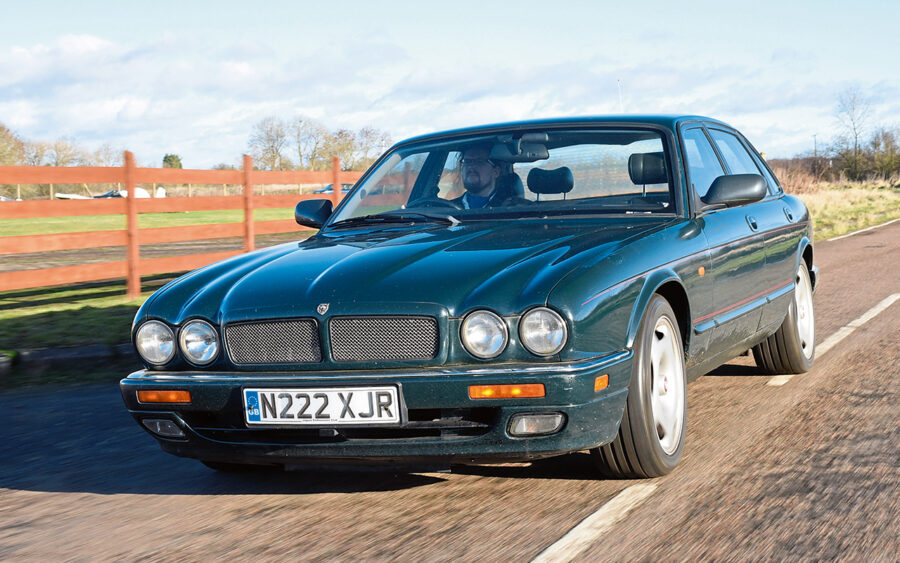
The XJR’s role was two-fold: the first, to be a peerless performance saloon in its own right; the second (and arguably more important) was to be a beacon for the 3.2 Sport and 4.0 Sport models, so that the company car user-choosers that were so important to Jaguar at the time could feel just as special.
Styling details unique to the XJR included a mesh front grille, unique 17-inch alloys featuring the lowest-profile tyres ever fitted to a Jaguar saloon, discreet XJR badging on the B-pillars and bootlid and distinctive full-leather bucket seats, although these could be specified as an option on ‘Sport’ models.
At £45,950, the XJR was also great value. Here was a car that was faster, better equipped and much more modern than an E34 BMW M5, yet was almost £7,000 cheaper. That’s a lot of money, especially when you consider that the standard XJR trim level left very few boxes unticked.
Power came from the 4.0-litre version of Jaguar’s newly revised AJ16 engine, with an all-alloy head and block. It developed 322bhp at 5,000rpm (much higher than a turbocharged unit) and 378lb ft of torque – enough to propel the automatic XJR from 0-60mph in just 6.6 seconds, or an eye-watering 5.9 seconds with the rarely specified manual ’box.
But why a supercharger? In many respects, the supercharging method of forced induction was considered old-hat, and during the development phase the company had experimented with turbocharging, which in some ways gave better figures – certainly in terms of economy. But, an element of ‘Jaguarness’ was essential to make the car stand out, and supercharging was the answer.
“The fact that [superchargers] give such a nice torque curve is very attractive, especially in a Jaguar,” said Jim Randle, Jaguar’s chief engineer during the car’s development phase.
The press certainly agreed, and, for the first couple of years of its life, the X300 was a massive success. It became the fastest-selling Jaguar ever – the XJR shining a high-performance halo over a range of Jaguar saloons that appealed to a younger audience as well as the brand’s more traditional customers.
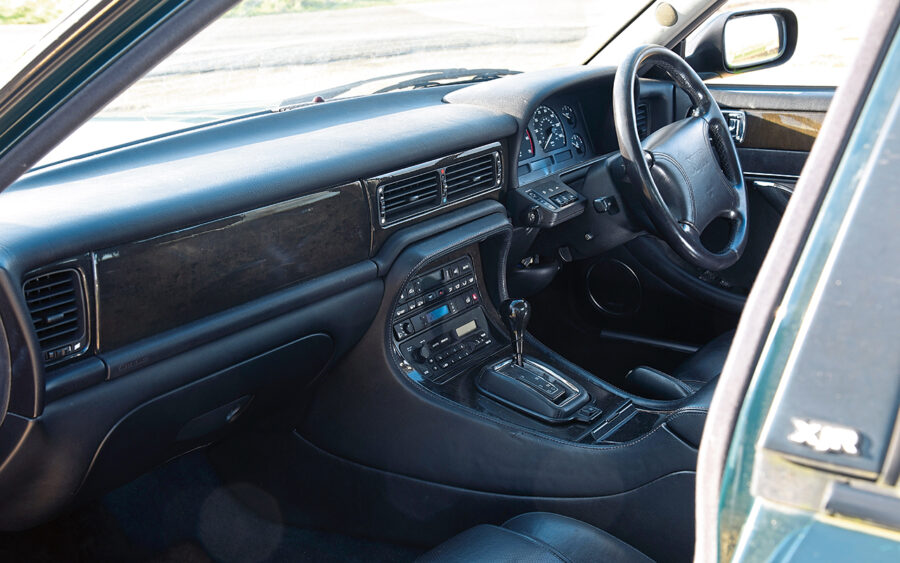
Yet, the harsh truth is this: when the X300 was launched, it wasn’t actually ready. From the outset, Ford had wanted to launch the car with Jaguar’s new AJ V8 engine range, but the powerplant’s development wasn’t progressing quickly enough. Delaying the XK8 sports car programme by several months was painful enough, but to delay the much-needed new saloon could have been the difference between Jaguar’s life and death. Hence the X300 was hurried to market with six-cylinder engines and XJ40 interior furniture. It was never more than a temporary arrangement.
Scroll forward to 1997 when, despite a short production life, the X300 was about to be replaced. Its successor, the X308, was the car that the X300 was meant to be in the first place, with a heavily revised interior and a range of V8 engines, the flagship of which was a 370bhp supercharged 4.0-litre. The new XJR was faster and more powerful still, and while it looked similar to the X300 there were styling differences. It was more subtle, somehow, with more discreet alloys and a less-aggressive grille, as if the XJR was becoming a little less intense. So, V8 or straight-six? Which is the one to go for?
There’s something harmonious about the styling of the X300 XJR, as if it was developed organically from the X300 Sport models. The reality is the other way around, though. The XJR was the starting point from which the performance-oriented ‘ordinary’ Sport models evolved, and by far its most distinctive feature is its 17in alloy wheels.
It’s a rim size that’s pretty much in Ford Focus territory today, but back in 1994 those wheels filled the arches of the X300 with little room to spare. Indeed, the 225/45/17s were the lowest-profile tyres ever fitted to a Jaguar and that, in turn, created a conundrum of its own – we’ll come to that.
Other ‘R’ styling cues included a full-mesh grille, body-coloured trim and grille surround and the removal of all brightwork from the window and door trims. The XJR was an exercise in aggression by discretion – there wasn’t a huge amount of difference between it and a standard XJ, but it was enough to make it stand out. There was a reason, too, that Jaguar finished all the launch models in love-it or hate-it lurid Turquoise – a colour that was only offered on the X300 Sport trims. Inside, it was equally stealthy. Black leather buckets seats, dark-maple veneers, and black leather dashboard and door trim were almost menacing.
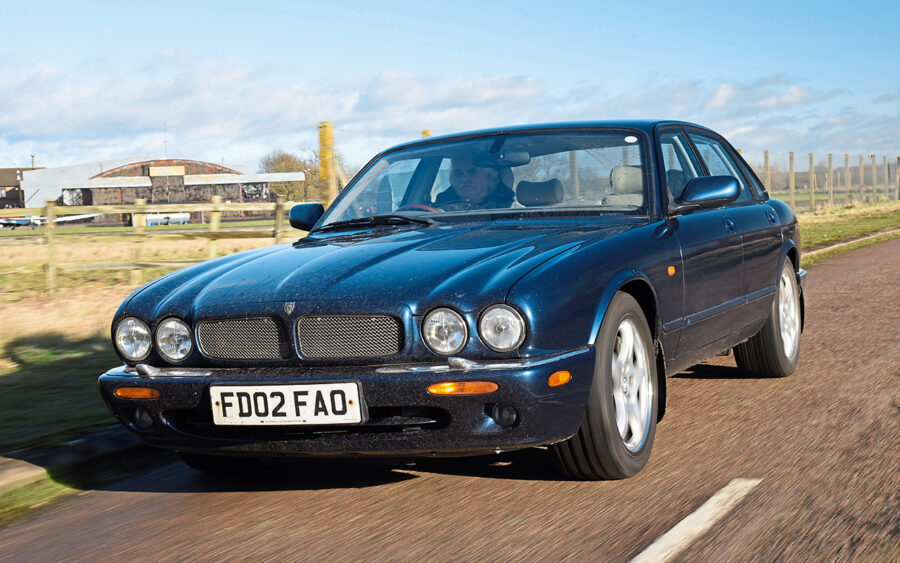
By the time the X308 appeared, though, the XJR had matured. It was no longer there just as an attention seeker, and with the X308 also came a subtle shift in marketing gears for Jaguar. As a result, the Sport trim level remained, but the model range was broadened to incorporate Executive as well as Sovereign trims, and the range brought closer together in terms of specification and styling.
The XJR replicated this – with a wider range of trim colours and paint options and less-aggressive alloy wheels, though the mesh grille and painted grille surround remained. The V8 XJR was more subtle than the six – a barometer of a change in society as much as in the car itself, where high-powered luxury cars in general were becoming less ostentatious.
Chrome trim reappeared on the windows and while the alloys remained at 17in, they were given a new five-spoke design. Things were tempered down inside, too, with bucket seats in black, grey, ivory or mushroom leather and an XJR steering wheel boss. The veneers were lighter, and the swooping new dash layout and centre console was carried over from the standard X308 saloons. It was an altogether more subtle package, even if the original XJR was relatively discreet to start with – yet it also packed an even bigger punch.
Whether or not you opt for the X300 or X308, one thing is for certain – it’s brutally fast. Smooth, sophisticated and cultured, despite the whine of the supercharger and intense power delivery. Compare that with a Mercedes-Benz AMG or BMW 5 Series, and the whole experience is far more composed. More gentlemanly. Calmer, but not without flourish. It’s the nuances between the two engines that will be the deciding factor for many when choosing an XJR, for the road behaviour isn’t dissimilar.
Going back to those 17in alloys for a moment, they were one of the biggest challenges for Jaguar’s engineers because the low-profile tyres didn’t suit the X300’s naturally pliant ride. That led to an exhaustive overhaul of the XJR’s suspension to ensure that any ride imperfections caused by the narrow rubber were intercepted by the suspension.
According to Jim Randle, ride was the key issue with the R-badged cars. “It’s the cornerstone of what a Jaguar is all about,” he said in 2012. “The XJR was a very careful medley, and, in some respects, I think the ride and handling balance was even better than in the standard cars as the primary control was better.”
Jaguar nailed it, too. Even in full-on attack mode, the XJR is as composed and cossetting as they come, while maintaining an agility that many much smaller cars struggle to muster.
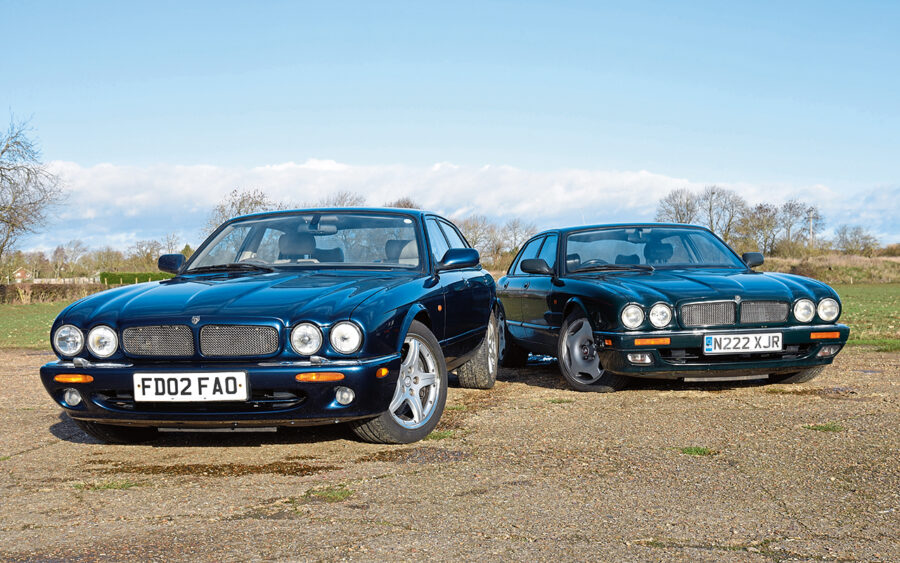
But, which is best? Starting with the X300, it’s low and wide, with a fairly insular cockpit and limited glass area. The driving position, too, is somewhat old fashioned. Even with the bucket seats, you sit in a reclined posture, legs and arms outstretched. But, despite the traditional feel, the cabin still has its premium features. Air conditioning, power-folding mirrors, a sophisticated Harman Kardon surround-sound stereo, electric seats, cruise control and a trip computer are all standard despite the old-fashioned sideboard of a dash.
Fire up the supercharged straight-six, and it sounds like any other AJ16, settling down from cranking into a pleasant ‘whoosh’ at idle. But it soon wakes up if you prod the throttle, that trademark supercharger whine making its presence felt from around 2,200rpm. It’s an exciting sound – not overly prominent, but definitely there. If you go through a tunnel in an X300 XJR, you’ll be unable to do so without rolling the window down and jabbing the gas pedal.
Yet, in a town environment, it’s as sober and refined as any X300, and that really is the key to its appeal. Yes, it can breathe down the neck of a Porsche 911 if you ask it to, but the true beauty of the XJR lies in its Jekyll and Hyde persona.
The good news is that the X308 is more of the same. Its inherent character is its equal but also different. It has a singular soundtrack, to start with. The V8 fires up straight away, requiring less cranking than the V6 and, at idle, it’s quieter and with a deeper baritone.
The cabin is more modern and extremely comfortable, but while it loses the antique feeling of the X300’s interior, it doesn’t add anything special to the equation. Indeed, some of the Ford-sourced switchgear feels quite cheap and not comfortably at home here.
You’d expect it to be heavier and more unwieldy, too, but that’s simply not the case. Indeed, the more you drive the V8 XJR the more similar the two cars become. The soundtrack may be different, but the character is near identical: you still get that slurping induction noise as the supercharger guzzles in its next few barrels of air; you still have a car that charges towards the horizon with alarming voracity if you want it to; and, thanks to the front suspension and steering adaptations introduced in all X308s, you get a sharper turn-in. In some ways it’s a more engaging car point-to-point and it’s definitely a more advanced one, yet it lacks the simple ‘muscle car’ nature of the big six.
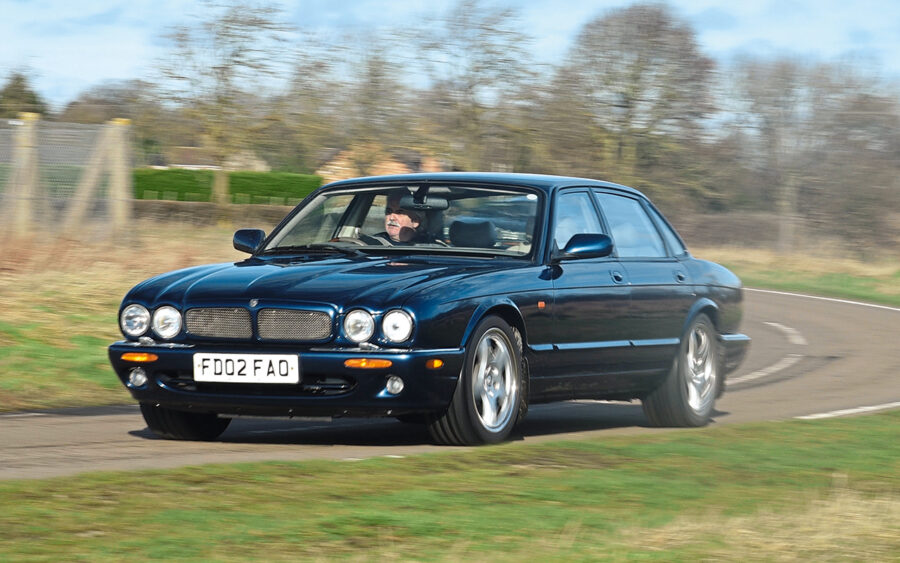
That’s the thing here. The X308 is the better car. But, as cars age, charm can become more important than simple competence. And it’s the X300 that’s the more charming.
So, which of these cars is the best? In many ways, it’s a question that’s entirely subjective. The X308 is the most developed, the fastest, the sharpest handling, and its V8 is a wonderful engine. It’s a car that’s impossible not to love and if you find one that’s solid and has a record of the timing chain tensioner being replaced or upgraded, you’ll buy yourself a 370bhp V8 engine supersaloon that will never, ever disappoint. It’s a wonderful thing – one of the best Jaguar saloon cars ever made.
The problem is, the X308’s predecessor is also one of the best-ever Jaguar saloons and represents a more significant chapter in the company’s history. The X300 XJR is a fabulous car that’s absolutely brimming with character, partly amplified by the features on it that were considered old-fashioned and anachronistic when new. Drive one and it’s impossible not to enjoy every moment.
The X300 is a rapidly evolving classic and a fine driver’s car. It might not be technically as good as the X308, nor as potent, but it’s several degrees more charming. It’s a beguiling and characterful car and a hugely significant one, which makes it our winner.
